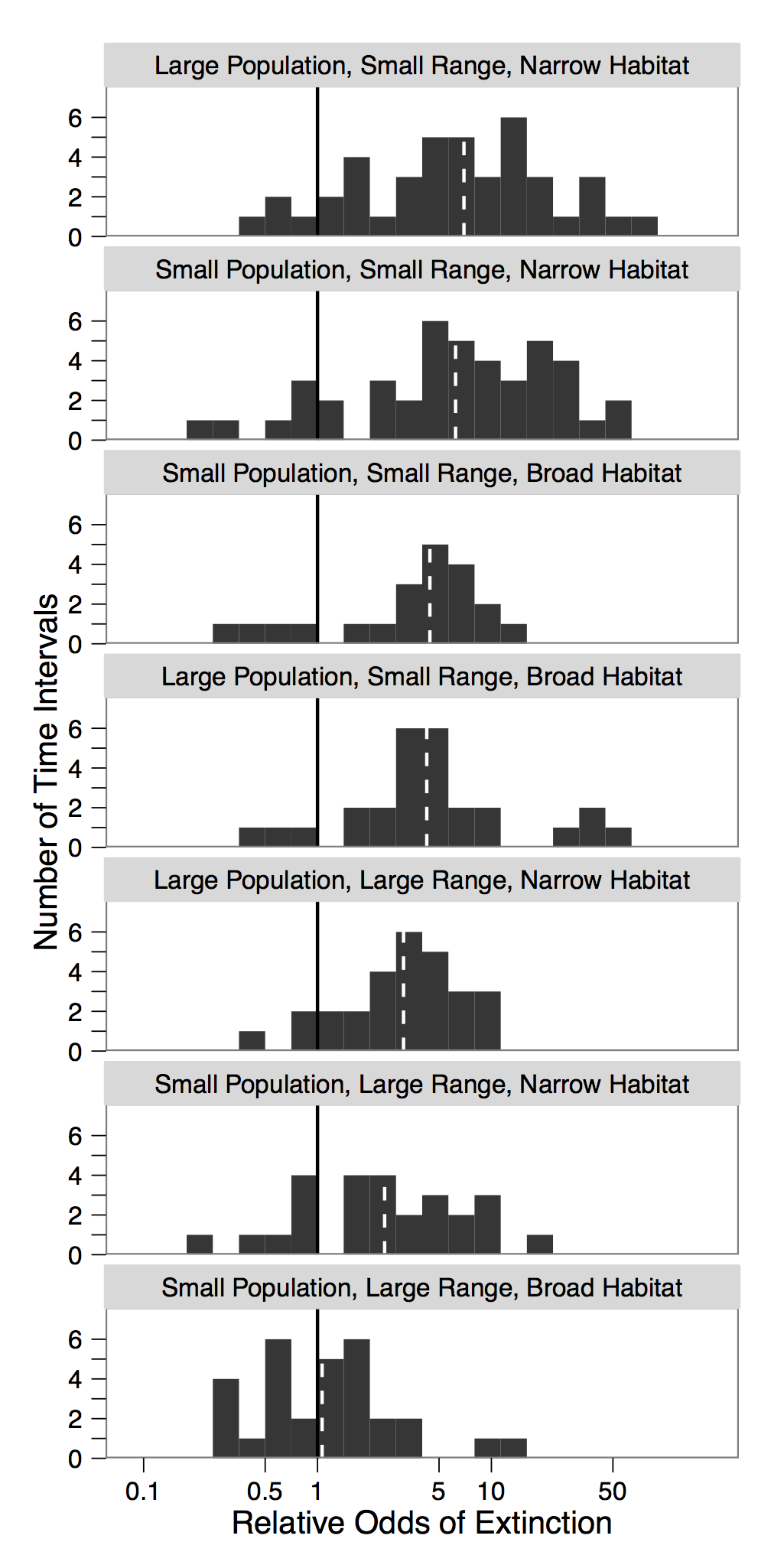Long-term differences in extinction risk among the seven forms of rarity
Harnik, P. G., Simpson, C., & Payne, J. L. 2012. Long-term differences in extinction risk among the seven forms of rarity. Proceedings of the Royal Society B - Biological Sciences. doi:10.1098/rspb.2012.1902 pdf
Rarity is widely used to predict the vulnerability of species to extinction. Species can be rare in markedly different ways, but the relative impacts of these different forms of rarity on extinction risk are poorly known and cannot be determined through observations of species that are not yet extinct. The fossil record provides a valuable archive with which we can directly determine which aspects of rarity lead to the greatest risk. Previous palaeontological analyses confirm that rarity is associated with extinction risk, but the relative contributions of different types of rarity to extinction risk remain unknown because their impacts have never been examined simultaneously. Here, we analyse a global database of fossil marine animals spanning the past 500 million years, examining differential extinction with respect to multiple rarity types within each geological stage. We observe systematic differences in extinction risk over time among marine genera classified according to their rarity. Geographic range played a primary role in determining extinction, and habitat breadth a secondary role, whereas local abundance had little effect. These results suggest that current reductions in geographic range size will lead to pronounced increases in long-term extinction risk even if local populations are relatively large at present.
The relative odds of extinction for the seven forms of rarity over the last 500 million years, with risk increasing from the bottom to top panels. Data are from figure 1, and are the number of time intervals characterized by different odds of extinction for genera in each rarity class relative to common genera. The solid black lines denote equal odds of extinction between rare and common genera. Dashed white lines denote the median relative odds of extinction for each rarity class over the last 500 million years. At the greatest risk of extinction are genera with both small ranges and narrow habitat breadth. Broader habitat breadth helps buffer narrowly distributed genera from extinction, whereas variation in the population size has negligible effect.
